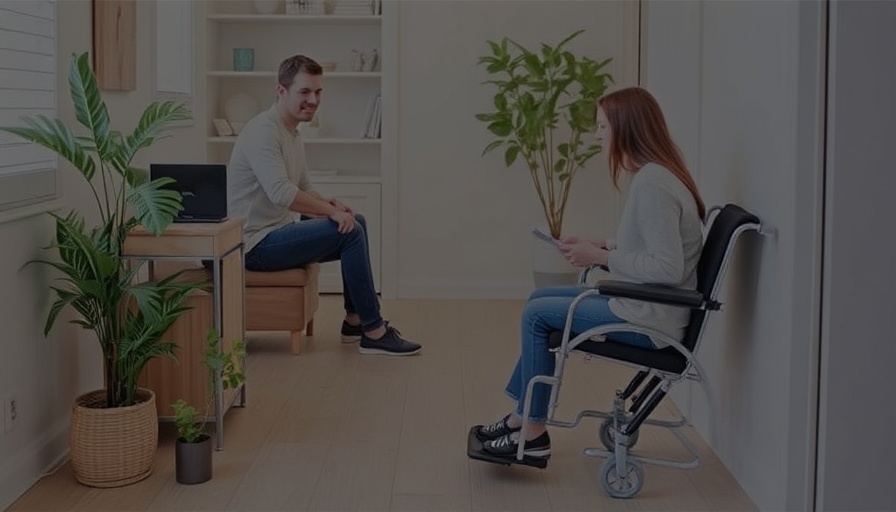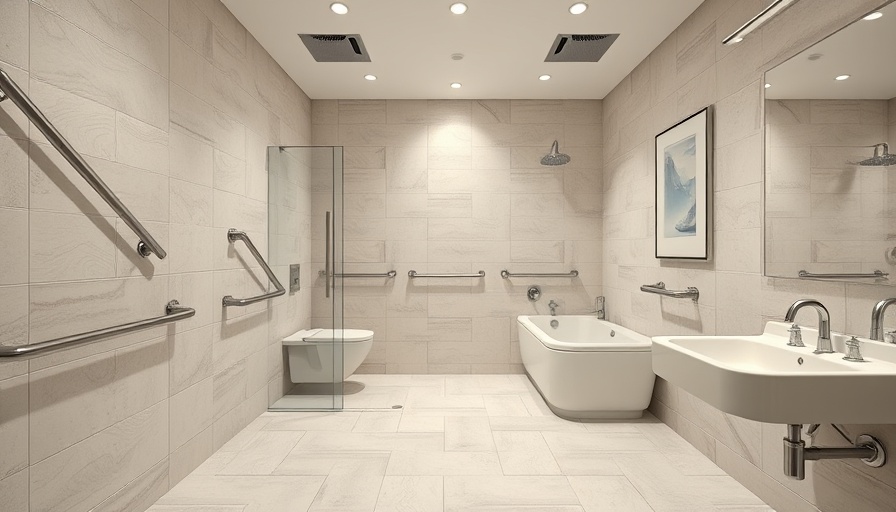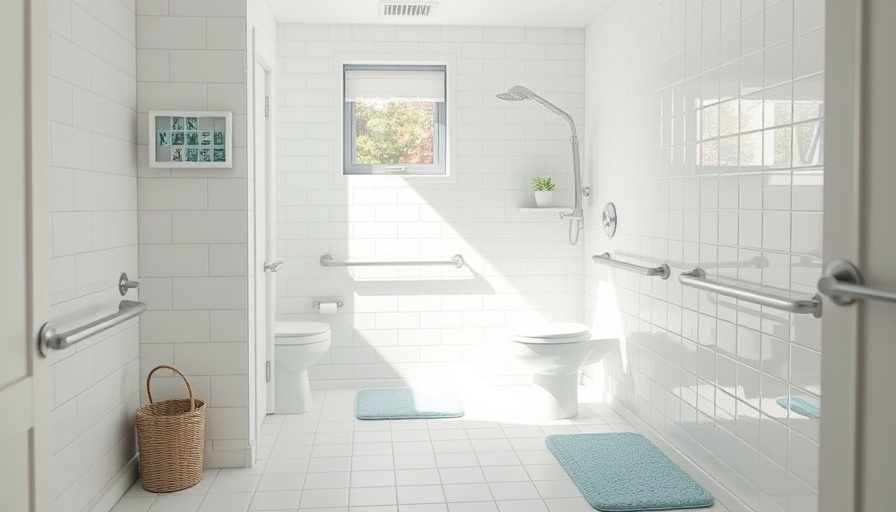
Understanding the Importance of Home Accessibility
Accessibility is a fundamental aspect of creating an inviting environment for everyone, particularly for elderly family members, individuals with disabilities, and those recovering from injuries. As communities increasingly value inclusivity, ensuring your home accommodates various accessibility needs is more relevant than ever. According to recent studies, nearly 1 in 4 adults in the United States live with some form of disability, highlighting the need for accessible living spaces.
For homeowners, focusing on accessibility isn't merely a choice; it can improve the quality of life for their loved ones. Understanding different accessibility needs is the first step toward meaningful improvement. Whether it involves making minor adjustments or major renovations, finding solutions that harmonize with your home's aesthetic while serving a critical function is essential.
Key Modifications for Improving Home Access
From installing grab bars to optimizing space layout, there are several key modifications that can dramatically enhance accessibility at home. One practical upgrade involves the installation of grab bars in areas like bathrooms or near staircases. These small additions can provide a stable support system for those navigating slippery surfaces or steep steps.
According to local contractors, the placement of grab bars is vital—typically positioned near toilets and in showers. For multi-level homes, embracing technology with stairlifts can significantly ease mobility between floors. Research has shown that stairlifts can extend independence for elderly residents or those with chronic conditions, ultimately keeping them safe and comfortable in their homes.
Clear Pathways for Optimal Movement
Another critical component of home accessibility is ensuring that pathways are wide and clear. Professionals recommend that hallways and doorways maintain a minimum width of 36 inches, allowing ample space for wheelchairs and other mobility devices. Keeping pathways unobstructed not only fosters safety but promotes ease of movement throughout various areas of the home.
Furniture placement plays a pivotal role in achieving this goal. Opting for lower furniture can create better sightlines, enhancing ease in navigation. Homeowners are encouraged to declutter regularly, ensuring that essential items are within reach for all family members, regardless of their mobility levels.
Incorporating Future Trends Into Home Design
The importance of home accessibility is evolving, aligning more closely with design trends that emphasize both functionality and aesthetics. The emerging trend of 'universal design'—creating spaces usable by all—shifts the focus from wheelchair-friendly spaces to holistic environments benefiting everyone. Features like adjustable countertops or motion-sensor lighting can facilitate a seamless living experience.
As we look to the future, the influence of smart home technology cannot be ignored. Smart devices can provide significant benefits for those with accessibility needs, allowing for greater control over home environments. For instance, voice-activated systems can assist those with limited mobility, managing everything from lighting to temperature with simple commands.
Common Misconceptions About Accessibility
There are several myths surrounding home accessibility that can deter homeowners from making necessary improvements. Many believe accessibility means sacrificing style or aesthetics, but today's design innovations challenge this notion. Accessible modifications can blend seamlessly with modern design, enhancing both functionality and visual appeal.
Additionally, some may think that accessibility upgrades are prohibitively expensive. While certain modifications can be costly, many affordable solutions exist, including simple adjustments like rearranging furniture or adding non-slip mats. It’s essential for homeowners to explore various options and consult with local professionals for tailored advice.
Promoting Inclusivity at Home
Ultimately, improving your home’s accessibility is about more than just modifications—it’s about creating an inclusive space where every member of the household can thrive. Engaging family members in discussions around accessibility is crucial. It fosters a supportive environment, ensuring that the needs and preferences of everyone are considered in the decision-making process.
As you assess your home for potential improvements, take the time to listen to the experiences of loved ones. This approach not only strengthens family bonds but also enriches your understanding of how to best create a welcoming space.
Conclusion: Steps Towards a More Accessible Home
Creating an accessible home is both a noble goal and a practical necessity. As you consider which modifications might work best for your home, remember that small changes can lead to significant improvements in the quality of life for your loved ones. So why not begin today? Revisit your space with fresh eyes, and consult with local accessibility experts to implement thoughtful changes.
For more insights on improving your home’s accessibility, reach out to professionals who specialize in these modifications. Their expertise can guide you on the journey to creating a welcoming and inclusive environment for all.
 Add Row
Add Row  Add
Add 




 Add Row
Add Row  Add
Add 

Write A Comment